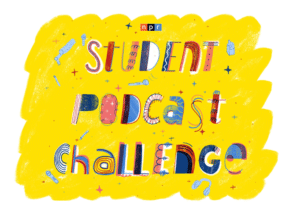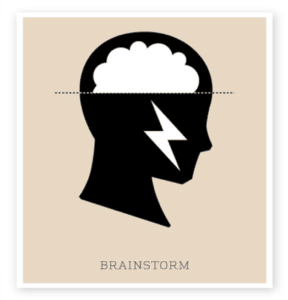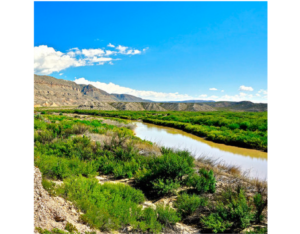Last Updated on June 25, 2021

Updated August 2019
During the winter of 2019 NPR ran their first ever student podcast challenge. The contest has since closed, but we’ve got some great resources if you are thinking about podcasting with your students! Keep reading for some ideas for creating your own podcasting projects in the classroom.
Use The Power of the Brainstorm
One way to help students quickly focus in on topics for their own podcasts is to invite the class (or smaller groups) to brainstorm topics about which they already have background knowledge. You could focus the brainstorm on topics they have been learning about in class, or or you could invite them to consider podcasting about their interests outside of school. You might suggest that they explore classroom resources for ideas, including the full collection of Listenwise stories.
Use the Interview Technique
Once your students have chosen their topics, the next challenge may be encouraging them to feel comfortable on the recording device that they are using. It is likely that your students will have varied levels of comfort with recording their own voices. One way to help them face this challenge is to get them talking to each other. Some of the most popular podcasts in the world are conversations, and there is a reason for this. Conversational podcasts often sound the most natural and authentic. Inviting your students to interview each other or interviewing them yourself gives them an opportunity to become more comfortable recording their own voices. Ask them to prepare a set of questions to guide the conversation and encourage them to probe responses for elaboration (e.g., Can you tell me more about that?)
Listen to Models of Good Youth Reporting
As discussed in our first blog post about this contest, there are many good podcast stories by students to use as models. Apart from the fact that they offer examples of engaging, relevant topics, these stories also provide great examples of youth reporter voices. Listening to these podcasts as a class or in small groups and then talking about what made the commentaries work can help students notice good journalistic storytelling practices. After listening to and discussing these stories, you can send your students off to record their full projects if you feel that they are ready. If you feel that they need more practice, you might use one of the stories as a model. Ask students to record short 1-2 minute commentaries similar to the stories that they liked, using the same techniques they noticed in the youth reporter stories.
Create a Practice Project
Practicing by recording a lower-stakes audio project can help to make your students more comfortable and confident in recording their own voices. For example, the Promposals story is a great youth commentary on prom proposals at the reporter’s school. Natalie Bettendorf, the youth reporter, breaks down the prom proposal craze and how the proposals become more and more ridiculous using real world examples. Those examples help deliver her point in an interesting and engaging way. Ask students to look for qualities like this that they can incorporate into their own projects. Click the images below to check out some quality examples of youth reporting.
P.S. We are now offering Podcast PD in partnership with Soundtrap. Learn how to create thought-provoking podcasts with Soundtrap’s easy-to-use audio and podcast creation platform and our step-by-step professional development, delivered by experts in podcasting and public radio! With our guidance, teachers will design and implement their own student podcasting projects.




